Anti-aircraft installations of the family ZU-23 / 30М1
Project ZU-23 / 30М1-3 and its version ZU-23 / 30М1-4 were developed by the Podolsk Electromechanical Plant PEMZ Spetsmash. The aim of this project was to create a new version of the obsolete anti-aircraft system ZU-23, suitable for operation in modern conditions. It was proposed to equip the basic anti-aircraft installation with a set of new equipment designed to automate various processes and enhance combat performance. The family of modernized anti-aircraft systems received the general designation ZU-23 / 30М1. At the same time, however, the family currently consists of only two installations - ZU-23 / 30М1-3 and ZU-23 / 30М1-4. Information about the existence of systems with indexes "1" and "2" is missing.
An important feature of the ZU-23 / 30М1 family of projects is the architecture of the proposed upgraded anti-aircraft system. As a basis for the new technology, the base ZU-23 is used with minimal design changes. It is mounted on a set of additional equipment designed to enhance the characteristics of the basic system. The structure of the new equipment includes mechanical drives of guidance, control systems, optoelectronic equipment, etc.
The basis of the design of the ZU-23 / 30М1 family of systems is a platform with wheel travel and supports. In the stowed position, the installation rests on two wheels and should be towed by automobile or other equipment. Upon arrival at the position, during preparation for combat work, the installation is lowered onto three outrigger supports located in the corners of the main platform. The wheels at the same time rise and hang above the ground.
On the main platform there is a turning mechanism on which the upper platform with the artillery unit, command and control equipment and the operator’s workplace is located. The overall architecture of the aggregates of the upper platform as a whole remained the same, however, it underwent some changes directly related to the addition of new hardware. In the center of the platform are two automatic guns with vertical guidance systems. Behind them on the left there is the operator’s workplace with a set of necessary controls and systems for monitoring the operation of the installation. To the right of the operator are boxes with other equipment.
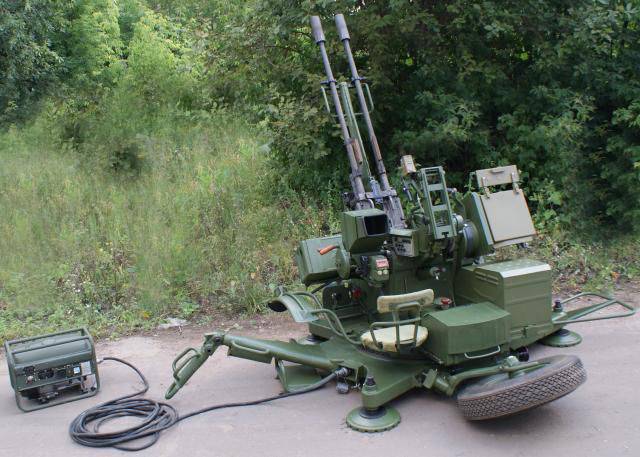
Anti-aircraft gun ZU-23 / 30М1-4, rear view. Photo Pemz-podolsk.ru
The artillery part of the ZU-23 installation is not converted when it is converted to ZN-23 / 30М1-3 or ZN-23 / 30М1-4. As the main means of attack of air and ground targets, two automatic guns 2А14 of caliber 23 mm are used. The guns use vapor control automatics and are capable of firing at a rate of up to 800-1000 shots per minute each. The total rate of two guns - up to 2000 shots per minute. 2А14 cannons use 23х152 mm projectiles. To date, several variants of such ammunition have been created: various operators can use both Soviet-made BZT armor-piercing and incendiary projectiles and other foreign-made shells. In two boxes, located on the sides of the guns, 100 shells are placed.
When upgrading to the ZU-23 / 30М1 state, to the right of the guns, a block of optical-electronic equipment is installed on the right-hand bracket for detecting targets, capable of swinging in a vertical plane with the tools. The unit includes a video camera and a thermal imager, which allows the operator to observe and attack the detected targets at any time of the day and in any weather conditions. The video signal of the optoelectronic system and other information are displayed on a monitor installed at the operator’s workplace.
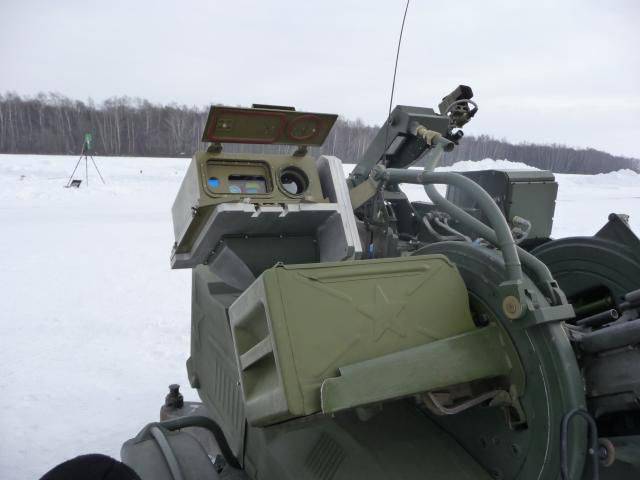
Optoelectronic unit. Photo Pemz-podolsk.ru
An important feature of the modernization projects ZU-23 / 30М1-3 and ZU-23 / 30М1-4 was the use of electric drives of the guidance system. The system operator retains the possibility of manually pointing the guns, however, special electric motors are used as the main method of changing the pickup angle. These mechanisms are controlled by two handles on the operator’s console located under the monitor. They also have shooting control buttons.
The composition of the anti-aircraft equipment of the ZU-23 / 30М1 family includes a computing device that is responsible for the operation of the unit in semi-automatic and automatic modes. The new electronics allows the operator to detect airplanes and helicopters at a distance of up to 8 km, which is significantly higher than the sights of older models. The developer declared the possibility of pointing guns in manual, semi-automatic and automatic modes. All these modes differ in the distribution of various tasks between the operator and the automation. So, there is the possibility of automatic tracking of the target and the calculation of pre-emption with control of the guidance mechanisms. It is argued that the use of new equipment allows an order of magnitude increase in installation efficiency.
For power supply of new electronic equipment on installations of the ZU-23 / 30М1 family, existing batteries or an external source can be used. In the latter case, the position should be placed generator of suitable power or any other equipment of similar purpose.
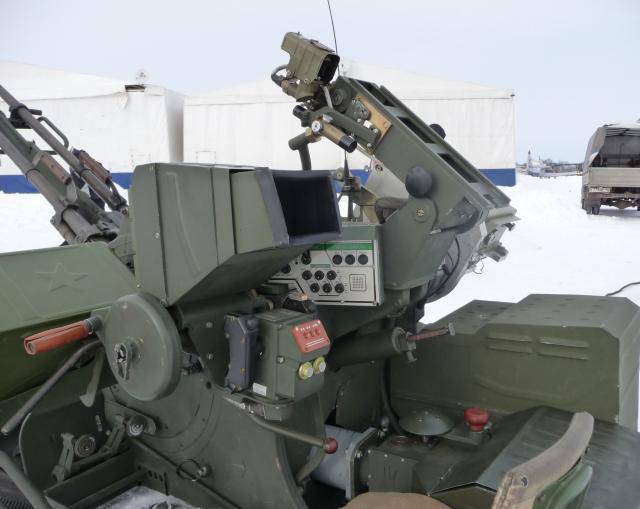
The control panel and bracket for mounting the launcher for missiles. Photo Pemz-podolsk.ru
The main difference between the ZU-23 / 30М1-4 system and ZU-23 / 30М1-3 is an extended list of equipment and armaments. Such a modification is equipped with an additional missile control panel, as well as a launcher for man-portable air defense systems. The installation provides mounting for mounting two transport-launch containers of Igla missiles or similar systems. The search for targets and preliminary guidance of missiles is carried out using the existing optical-electronic system. Automation is able to determine the parameters of the target and advise the operator on the use of barreled or rocket weapons. After launch, the missiles are induced independently.
Modernization with the use of new equipment allowed keeping some characteristics at the same level, as well as increasing a number of other parameters. When using anti-aircraft guns, shelling is carried out at ranges up to 2500 m and at altitudes up to 1500 m. The design of the anti-aircraft system allows firing in any direction with elevation angles from -5 ° to + 80 °. The drives used can direct guns in a horizontal plane at speeds up to 60 degrees per second and at speeds up to 45 ° per second in verticals. Reaction time, according to the developer, does not exceed 6 with. Perhaps firing at targets moving at speeds up to 400 m / s. Maximum shooting efficiency is achieved at target speeds no more than 200 m / s.
Anti-aircraft gun ZU-23 / 30М1-4, equipped with missile weapons, has great characteristics of destruction in range and height. The Igla and Igla-S missiles make it possible to hit targets at a distance of up to 6 km and altitudes up to 3,5 km. The speed of the effectively hit target in this case reaches the 400 m / s. After the shooting of the two missiles available on the launcher, the installation of new containers takes no more than a few minutes and is carried out by calculation forces.
If necessary, upgraded anti-aircraft installations can be used to attack ground targets. In this case, the fire is conducted with a minimum angle of elevation of the trunks. The maximum range of destruction of ground targets, depending on their type, corresponds to the range of firing at air. At the same time, however, the effective firing range directly depends on the type of target. Thus, an unprotected vehicle can effectively be hit over the entire range of distances, whereas armored vehicles should attack at a shorter distance. In addition, the effective range for armored vehicles depends on the type of shells used.
According to reports, anti-aircraft installations of the ZU-23 / 30М1 family can operate as part of batteries. In this case, the operator manages one installation with a complete set of equipment and interacts with several similar systems in a simplified configuration. The operation of such a battery is controlled by the operator who monitors the air situation and determines the targets for the attack. The automatics of the “main” installation in such a case can issue target designation and commands to other installations that have only pointing drives and fire control systems. Such a mode of operation can combine up to four anti-aircraft installations in a single structure: one “master” and three “slaves”.
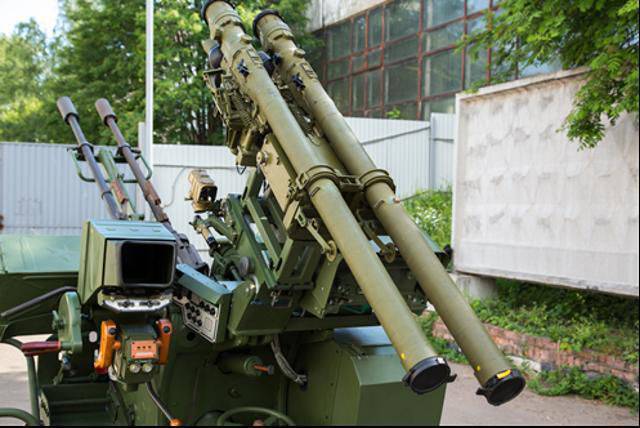
Anti-aircraft gun ZU-23 / 30М1-4 with missiles. Photo Pemz-podolsk.ru
The company-developer offers customers a whole range of tools designed for the full operation of the upgraded anti-aircraft installation. In addition to the towed units ZU-23 / 30М1-3 or ZU-23 / 30М1-4, this complex includes a maintenance machine, a set of spare parts tools, and training systems for training operators. There is also information about the creation of a special support platform, which allows you to mount an anti-aircraft installation in the back of any suitable truck.
In the basic towed version, anti-aircraft installations of the ZU-23 / 30М1 family are serviced by a crew of five, including the driver of the towing vehicle. The mass of the installation, depending on the modification, does not exceed 1260 kg. The construction of the undercarriage allows you to tow it at speeds up to 70 km / h on the highway and not faster than 30 km / h on a dirt road.
Projects of the modernized anti-aircraft installations ZU-23 / 30М1-3 and ZU-23 / 30М1-4 were offered to customers at the end of the two thousandth. Soon there was information about the first purchases of such weapons. In the first half of 2011, deliveries of several types of Russian anti-aircraft systems to Venezuela began. A large contract involved the delivery of various missile and artillery systems, including the ZU-23 / 30М1-4 installations. According to the Venezuelan press, 300-like systems were ordered with the ability to use anti-aircraft missiles. The first samples of such weapons were transferred to the customer in May 2011 of the year.
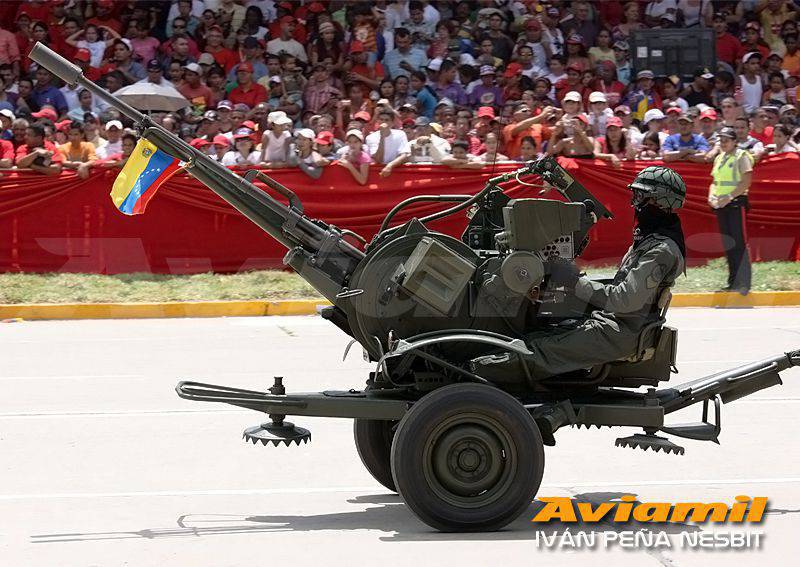
Installation of the charger-23 / 30М1-4 at the parade in Venezuela
5 July 2011, on Independence Day, a military parade was held in Caracas. During this event, various models of weapons and equipment recently purchased by Venezuela were demonstrated. Among other samples, anti-aircraft installations ZU-23 / 30М1-4 were shown in towed version. Apparently, a technician participating in one of the first games took part in the parade.
Information about other contracts for the supply of anti-aircraft installations of the ZU-23 / 30М1 family is not yet available. Probably, while new buyers have not shown interest in these systems. Nevertheless, it can be expected that in the near future the Podolsk Electromechanical Plant PEMZ Spetsmash will receive new orders for such weapons. ZU-23 anti-aircraft guns and their modifications are in service with a large number of countries in the world that may be interested in upgrading or replacing them, but are not able to buy more sophisticated and sophisticated air defense systems.
On the materials of the sites:
http://pemz-podolsk.ru/
http://arms-expo.ru/
http://vestnik-rm.ru/
http://bmpd.livejournal.com/
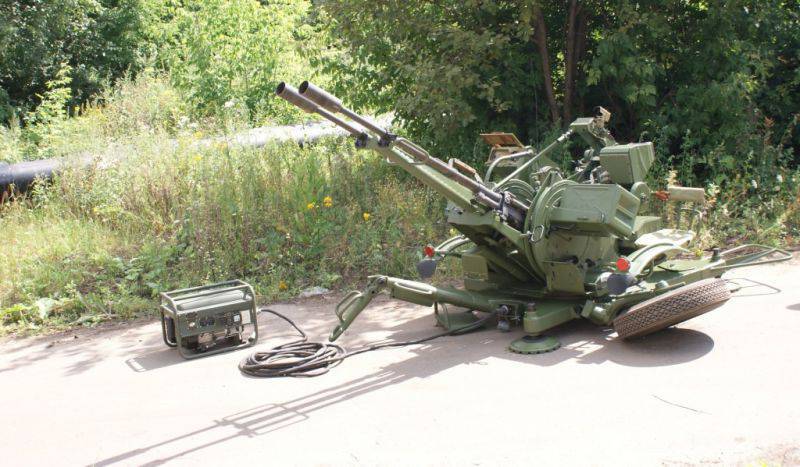
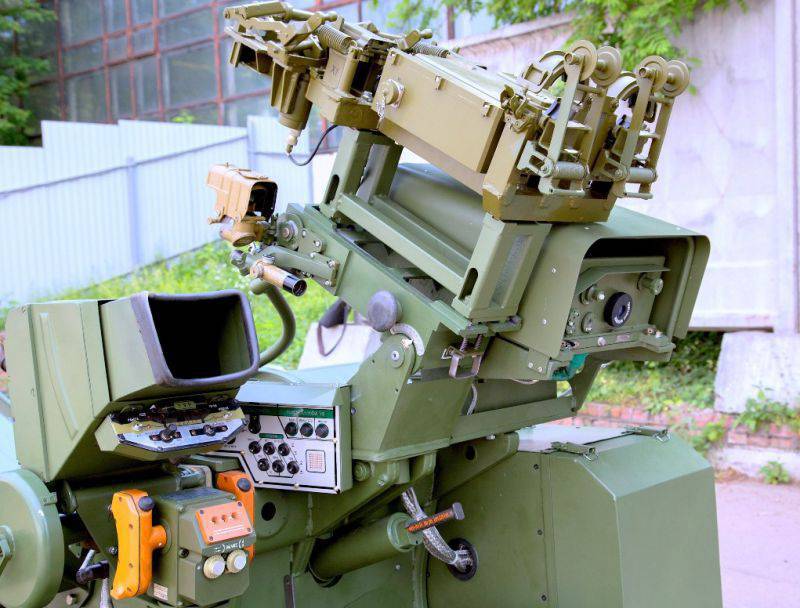
Information